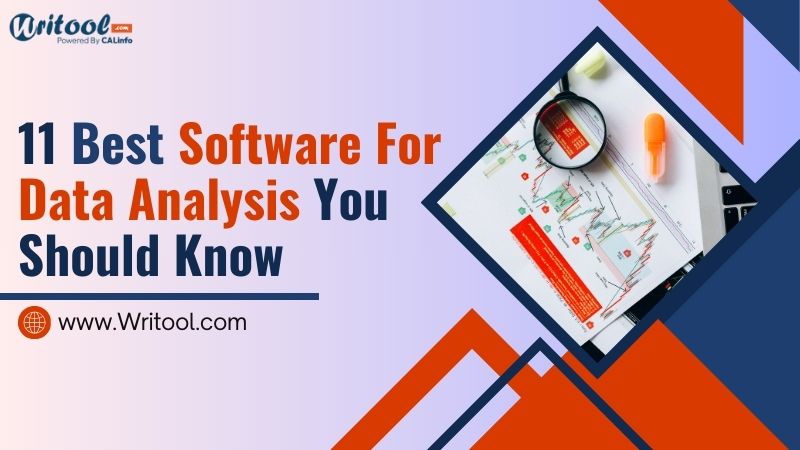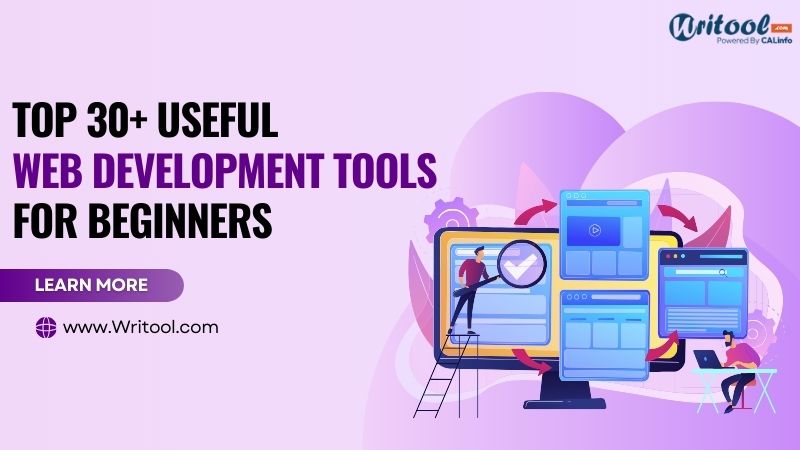In today’s data-driven world, businesses, researchers, and analysts are increasingly relying on advanced tools to process and analyze vast amounts of data. Whether you’re a data scientist or just getting started in the field, having the right software can make a huge difference in your ability to draw meaningful insights. With the rapid growth of data analytics, it’s crucial to stay ahead of the curve by using the best software for data analysis available today. These tools not only help you make sense of complex datasets but also optimize workflows and improve decision-making processes.
In this blog, we will discuss the 11 best software for data analysis. From beginner-friendly options to more advanced platforms, we’ll cover all the bases to ensure you have the right tool for your needs.
What is Data Analysis?
Data analysis is the process of looking at, cleaning, changing, and organizing data to find useful information, make decisions, and draw conclusions. It’s an important step for businesses and professionals in many areas, from finance to healthcare, to uncover hidden insights. With the right tools, you can turn raw data into valuable information that helps drive success.
Importance of Data Analysis Software
Data analysis software plays a crucial role in transforming raw data into actionable insights. It allows businesses, researchers, and analysts to make informed decisions based on accurate and thorough analysis.
With the vast amounts of data generated daily, using the right software ensures efficiency, accuracy, and scalability in handling complex datasets. Data analysis software enhances productivity by automating processes, reducing manual errors, and providing advanced tools for deep insights.
Whether you’re analyzing sales trends, customer behavior, or scientific data, the best data analysis software analysis allows you to unlock the full potential of your data, driving smarter decisions and achieving better outcomes.
Also Read:- How To Design Social Media Graphics
11 Best Software For Data Analysis You Should Know
1. Microsoft Excel
Microsoft Excel continues to be one of the most widely used and easy-to-use tools for data analysis. Its flexibility and simple interface make it a great choice for both beginners and experts. While it may not handle massive datasets like some other software, Excel’s powerful formulas, pivot tables, and data visualization features make it a go-to tool for basic to intermediate analysis.
2. R Programming
R is a powerful programming language used extensively for statistical computing and data analysis. It is especially favored by statisticians and data scientists due to its wide range of packages and libraries tailored for various data analysis tasks. For more advanced and customizable analysis, R is a great option. With its extensive libraries for data manipulation, visualization, and statistical modeling, R is undoubtedly among the best software for data analysis.
3. Python
Python has rapidly become one of the leading languages for data analysis. With libraries like Pandas, NumPy, and Matplotlib, Python offers an easy yet powerful way to process, analyze, and visualize data. Python is widely used for machine learning, artificial intelligence, and deep learning, making it an indispensable tool in modern data analysis.
4. Tableau
Tableau is a robust data visualization tool that helps professionals analyze data and present insights in an interactive and visually appealing manner. It connects to a wide range of data sources and provides powerful features for creating dashboards and reports. Tableau’s ease of use and strong visualization capabilities make it the most useful data analysis software, particularly for those focusing on data storytelling and visualization.
5. SAS
SAS (Statistical Analysis System) is a comprehensive suite of software used for data management, advanced analytics, and predictive analytics. It’s widely used in industries such as healthcare, finance, and marketing. With its powerful analytics capabilities and strong customer support, SAS is often chosen by organizations dealing with large datasets and complex analysis. If you’re looking for a high-performance tool, SAS is one of the best software for data analysis.
6. IBM SPSS
IBM SPSS is another excellent choice for statistical analysis and data management. It’s known for its user-friendly interface, making it accessible to non-programmers while still offering powerful features for advanced analytics. SPSS is especially popular in social sciences, healthcare, and marketing research, where detailed statistical analysis is required.
7. Google Data Studio
Google Data Studio is a free tool that enables users to create customizable reports and dashboards with data from various Google services and other sources. It’s a great option for teams already integrated into the Google ecosystem. With its drag-and-drop interface and cloud-based functionality, Google Data Studio is an excellent choice for collaborative data analysis and reporting. It is notable for its user-friendliness and ability to integrate with other tools.
8. QlikView
QlikView is a business intelligence tool that provides powerful data analytics and visualization features. It allows users to perform in-depth analysis and create intuitive dashboards. With its associative data model, QlikView enables users to explore data from multiple perspectives without predefined queries. Its ability to handle complex data models and produce insightful reports makes it one of the best software for data analysis in the market.
9. Power BI
Power BI by Microsoft is a robust business analytics service that provides interactive visualizations and business intelligence capabilities. Its integration with Microsoft products, ease of use, and powerful data modeling features make Power BI a top choice for data analysis. It’s particularly suited for businesses looking to analyze and visualize large amounts of data.
10. KNIME
KNIME (Konstanz Information Miner) is a free, open-source platform for data analysis, reporting, and integration. KNIME allows users to design data workflows with minimal coding, making it accessible for both beginners and advanced users. With its wide array of data analysis tools and easy integration with other software, KNIME is a great choice for those who need to analyze data in complex, large-scale environments. For those focused on automation and workflow optimization, KNIME is the best software for data analysis.
11. D3.js
D3.js is a JavaScript library used to create interactive and dynamic data visualizations. While not a traditional data analysis tool, D3.js enables users to transform data into compelling visual formats, which is essential for data analysis in certain contexts. It’s best for those with programming skills who want to create custom, web-based visualizations.
Also Read:- Top 10 Mobile E-Commerce Apps
How to Choose the Right Data Analysis Software For You?
Selecting the best data analysis software depends on your unique needs, skill level, and the kind of data you’re handling. Here are some important factors to keep in mind:-
Data Complexity and Size
If you’re dealing with large datasets, consider software that can efficiently handle big data, such as Python or SAS. For smaller datasets, tools like Excel or Google Data Studio may suffice.
Ease of Use
Choose software that matches your skill level. Beginners may prefer user-friendly options like Tableau or Google Data Studio, while more advanced users might opt for Python or R for their flexibility.
Integration Capabilities
Ensure the software can integrate with your existing data sources and systems. Power BI and QlikView, for instance, offer strong integration features with other business tools.
Budget
Some tools are free, like Google Data Studio and R, while others require a subscription or license. Take into account your budget and the benefits the software offers.
Specific Use Cases
Choose the software based on the type of analysis you require. SPSS and R are perfect for statistical analysis, while Tableau and Power BI are great for creating visualizations.
Conclusion
Choosing the best software for data analysis is crucial to ensuring that your data-driven decisions are based on solid insights. With so many choices out there, selecting the right tool can feel overwhelming. However, each software mentioned in this list offers unique features tailored to different needs, whether you’re just starting or managing large-scale data projects.
By investing in the right platform, you’ll unlock the full potential of your data, streamline your workflow, and make smarter decisions faster. Don’t hesitate to explore these tools, test them out, and find the one that best suits your data analysis needs.
FAQs
Is Power BI free?
Power BI provides a free version with basic features, but to access advanced functionalities, a paid version (Power BI Pro) is necessary.
Which data analysis software is best for large datasets?
For large datasets, software like SAS, R, and Python, along with their respective libraries, are excellent choices due to their high performance and ability to handle big data.
Is R suitable for business data analysis?
Yes, R is widely used in business analytics, especially for statistical analysis, predictive modeling, and data visualization.


